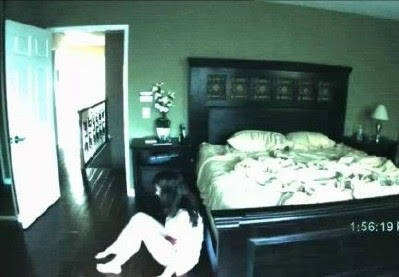
Scene from the creepy, intense "Paranormal Activity."
News accounts suggest that the spooky new thriller “Paranormal Activity” is on track to become one of the year’s most profitable films because ticket sales are strong and the movie cost only $15,000 (some stories say $10,000) to make.
“A month ago, few people outside of Paramount and select cities knew about "Paranormal Activity," Advertising Age says. But producers changed that “by letting consumers play distribution chief, and taking more than a few cues from the 'Blair Witch Project' playbook.”
It makes sense that the cost of production would directly affect a film’s profitability – the lower the cost, the greater the potential profit. But should the cost affect our perception of the movie’s quality – that is, should we judge a $10,000 film on a different scale than a blockbuster made on a megamillion-dollar budget?
Here according to published news accounts are the top five films with the largest recorded budgets:
- Spider-Man 3 (2007) $255 million (Internet Movie Database)
- King Kong (2005) $207 million (BBC)
- Superman Returns (2006) $204 million (Entertainment Weekly, others)
- Titanic (1997) $200 million (USA Today)
- Spider-Man 2 (2004) $200 million (IMDB.com)
At that cost relative to “Paranormal,” should Spider Man offer 25,000 times the entertainment value?
Director Peter Jackson’s 2005 take on the King Kong saga was “the jaw-dropping, eye-popping, heart-stopping movie epic we've been waiting for all year,” Rolling Stone reported. Roger Ebert called it “magnificent entertainment.”
What would you expect, for something that costs 21,000 times this new flick?
That’s not fair, of course. Still, one gauge of success – how far along the scale toward “Big-C” creativity that produces lasting works of art – ought to be a measure of the inputs.
That’s the implicit agreement that users of most online video make – the lower quality (but getting better) image is sometimes offset by “real,” raw engaging content.
“Paranormal” makes the same bargain with its audience. Because it’s “real” we don’t expect expensive production values. But we still buy into the narrative, jump out of our chairs and feel the chills because the film works exactly as it’s supposed to, delivering the same jolt that other films spend millions achieving as it taps the flight-or-fight neurocircuitry that makes a bump in the night so alarming.
Superheros take a bit more explanation, not to mention CGI.
Like “The Blair Witch Project” before it, “Paranormal” benefits from a rough documentary style. Another example from this genre is the low-budget (of course) Vietnam War drama, “84 Charlie MoPic,” the Army name for a combat photographer.
A better way to compare inputs and quality would be with films using traditional, non-doc storytelling.
Some of the most intriguing films from some of the best-loved directors were low-budget efforts. “American Graffiti” from George Lucas cost less than $1 million in 1973 ($4.8 million in 2008 dollars). Lucas’ less-known 1971 effort “THX 1138” is on many of these lists, including:
“Seven Best Ultra-Low Budget Films Ever Made,” and “Small Budget, Big Box-Office Bling”
Here’s a look at some great low-budget successes:
- “Blair Witch Project” Cost, $35,000; Gross, $296 million
- “Napoleon Dynamite” Cost, $400,000; Gross, $46 million
- “Slumdog Millionaire” Cost, $15 million; Gross, $364 million
(Source: TheNumbers.com box office data; Wikipedia)
A fair guess is that moviegoers are far more immersed in the story on any given film than in the balance sheet. It matters enormously to the producers, so we can expect more doc-style devices used to make cheap films. (Can a YouTube-based storyline be far behind?)
Nothing changes in the number that matters most to moviegoers, however:
The price at the ticket counter remains the same.
- By John Strauss, jcstrauss@bsu.edu

No comments:
Post a Comment